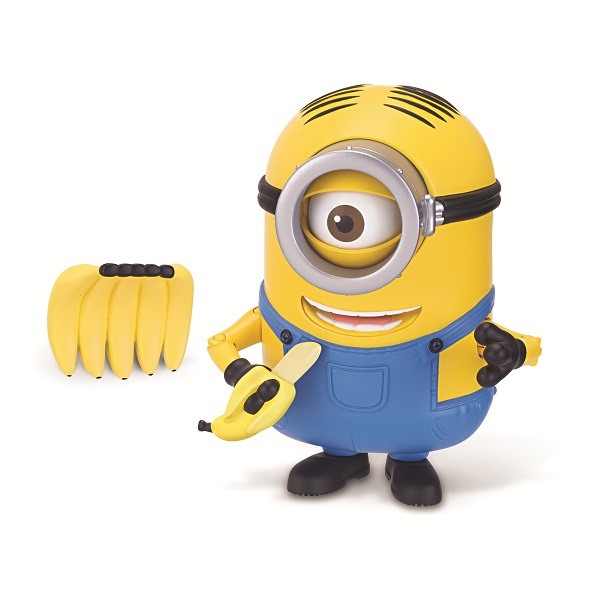Whether you’re searching for toys at a big-box store in the US suburbs, or amongst the throngs of people at a busy shopping centre in Asia, chances are you will be able to find licensed Minions merch or Frozen’s Elsa dolls.
In fact, licensed toy sales are up across the board in all 32 markets covered by London-based research firm Euromonitor International. Additionally, licensed playthings now claim 27% of all sales in the global toy market, according to Utku Tansel, Euromonitor head of toys and games.
With Americans spending nearly US$5.9 billion at retail on licensed toys and games last year, the US has a comfortable lead over both Japan and the UK, which sit second and third, respectively (see chart, p.65). However, Tansel sees fourth-place China as the land of real opportunity.
With just 15% of toys sales coming from licensed goods, and the populous Asian country’s per capita income forecasted to grow over the next 15 years, Tansel expects the situation will translate to more disposable income dollars being spent on licensed toys. (They tend to be pricier than their generic counterparts. ) But that won’t come without some challenges along the way.
“Licensed properties like Barbie, Cars and Marvel are still growing in China, but there are restrictions imposed by the government preventing these properties from developing fully,” Tansel says. “There is a national policy imposed by the state administration of radio, film and television that requires TV channels to broadcast only domestic animated TV series during primetime.”
Aside from China, Tansel also sees plenty of opportunity for licensed toys in the emerging Mexican and Brazilian markets, where they already account for 30% of category sales. “When you look at Mexico and the top 10 properties in that country, you hardly see any local ones,” he says.
As with China, the combination of higher per capita income and a maturing market is expected deepen the penetration of licensed toy sales in both countries over the next 15 years. Other encouraging signs are found in Brazil, which ranks fifth worldwide and number one for licensed toys in Latin America, where 47.7 million people (23%) are under 14 years old. While in Mexico, 33.5 million people (27.6%) fit into that age bracket.
For many of the reasons already mentioned, Tansel says you can also add Russia—the seventh biggest market for licensed toy sales in 2014 with US$768 million—to the list of which markets to explore when it comes to licensed property growth.
“Russia is an interesting market because they’ve still got their own properties from the Soviet era. Nostalgia plays an important role and parents are still opting for the properties they used to play with when they were children, whereas their kids are much more global as to what’s happening in terms of new properties,” Tansel explains.
While cultural nuances can be a barrier to entry, Tansel notes preschool properties and global brands, like many in Disney’s arsenal, tend to travel well. “When companies are thinking of entering a new market, they will need to consider what sorts of properties are out there, whether domestic or international, which ones are more pronounced, and then adjust their marketing strategy accordingly,” he says.
Looking at the overall licensing landscape, Tansel says the biggest challenge ahead will be to come up with new and inspiring properties. One quick look around and you’ll see that many entertainment companies, and especially retailers, have been hesitant when it comes to investing in new and unproven properties. Instead, many have been banking on the plethora of classic reboots currently on the go.
“I congratulate Disney for its success with Frozen, which added a completely new property to the industry. Creating an evergreen brand—the holy grail of licensing—is difficult,” he says. “Hopefully we will see this from other companies, too, in years to come.”
One of the main reasons Disney was able to turn Frozen from a hit movie into a global cross-category brand almost overnight was the way it managed to harness the power and reach of social media platforms, Tansel adds.
“It is very important now for a property to get engaged with the public through social media. Disney used this very well in terms of creating its brand,” Tansel says. He adds that Frozen achieved its current stature largely through Disney’s social media strategy on channels like Facebook, Twitter and YouTube.
“It resonated and engaged with people—not only children, but adults as well—much more than other properties,” he says. “Do not underestimate the power of social media.”
This article was originally published in Kidcreen’s October 2015 issue.
























